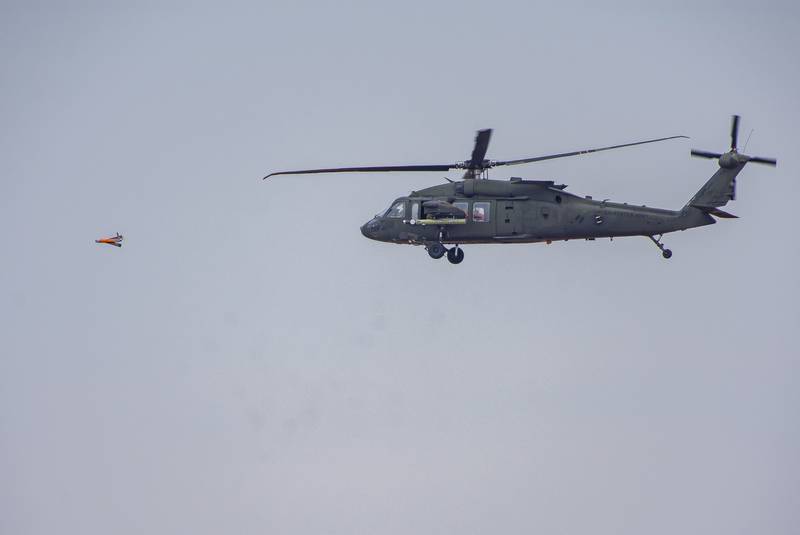WASHINGTON — Jam-resistant navigation technology that can be mounted to U.S. Army ground vehicles performed well in trials and provided troops the context needed to accomplish tasks and get where they needed to be, the Pentagon’s chief weapons tester said.
The Mounted Assured Positioning, Navigation and Timing System, or MAPS GEN II, “improved situational awareness” and helped facilitate mock reconnaissance and casualty-evacuation missions, all while GPS signal was jeopardized, the Office of the Director of Operational Test and Evaluation said in a public report released last month.
Asked Feb. 10 for specifics on the maker of the MAPS GEN II used in testing, a spokesperson for the Army’s Program Executive Office for Intelligence, Electronic Warfare and Sensors, or PEO IEW&S, said: “It was MAPS GEN II.”
The office in September announced Collins Aerospace, a subsidiary of Raytheon Technologies, was selected for a potential five-year, $583 million MAPS GEN II production contract. The award followed a 2020 deal in which Collins was tasked with MAPS maturation and preliminary integration. The value was not disclosed at the time.
Raytheon is the second largest defense contractor in the world when ranked by revenue, at nearly $42 billion in 2021, according to Defense News analysis. An inquiry made to Collins was not immediately answered.
RELATED

MAPS GEN II is designed to ensure troops understand where they are and where they are headed, even in environments where GPS signal is compromised and other systems are being harassed. The tech will be set into a slew of armored platforms, including Abrams tanks and Paladin artillery, as well as lighter options, such as Stryker combat vehicles and Humvees.
The emphasis on advanced navigation gear comes as the U.S. prepares for potential conflict with Russia or China. A fight with either will likely involve dealing with hefty electronic interference and signal-impeding obstacles, such as dense vegetation or urban buildup. Collins on its website describes the suite as providing “the highest level of protection against the most severe and evolving” threats.
Limited testing of MAPS GEN II, which marries anti-jamming and -spoofing capabilities with input from alternate sensors to reduce reliance on GPS, was conducted in September 2021. A separate, classified report was then produced. Additional evaluations were held between May and June 2022 at the Army’s Electronic Proving Ground at Fort Huachuca, Arizona.
Further study, at a “suitable location,” is scheduled for the fourth quarter of fiscal 2023, according to the Pentagon tester’s report.
Colin Demarest is a reporter at C4ISRNET, where he covers military networks, cyber and IT. Colin previously covered the Department of Energy and its National Nuclear Security Administration — namely Cold War cleanup and nuclear weapons development — for a daily newspaper in South Carolina. Colin is also an award-winning photographer.
- SEO Powered Content & PR Distribution. Get Amplified Today.
- Platoblockchain. Web3 Metaverse Intelligence. Knowledge Amplified. Access Here.
- Source: https://www.defensenews.com/battlefield-tech/2023/02/22/us-army-jam-resistant-navigation-kit-for-vehicles-passes-pentagon-test/



